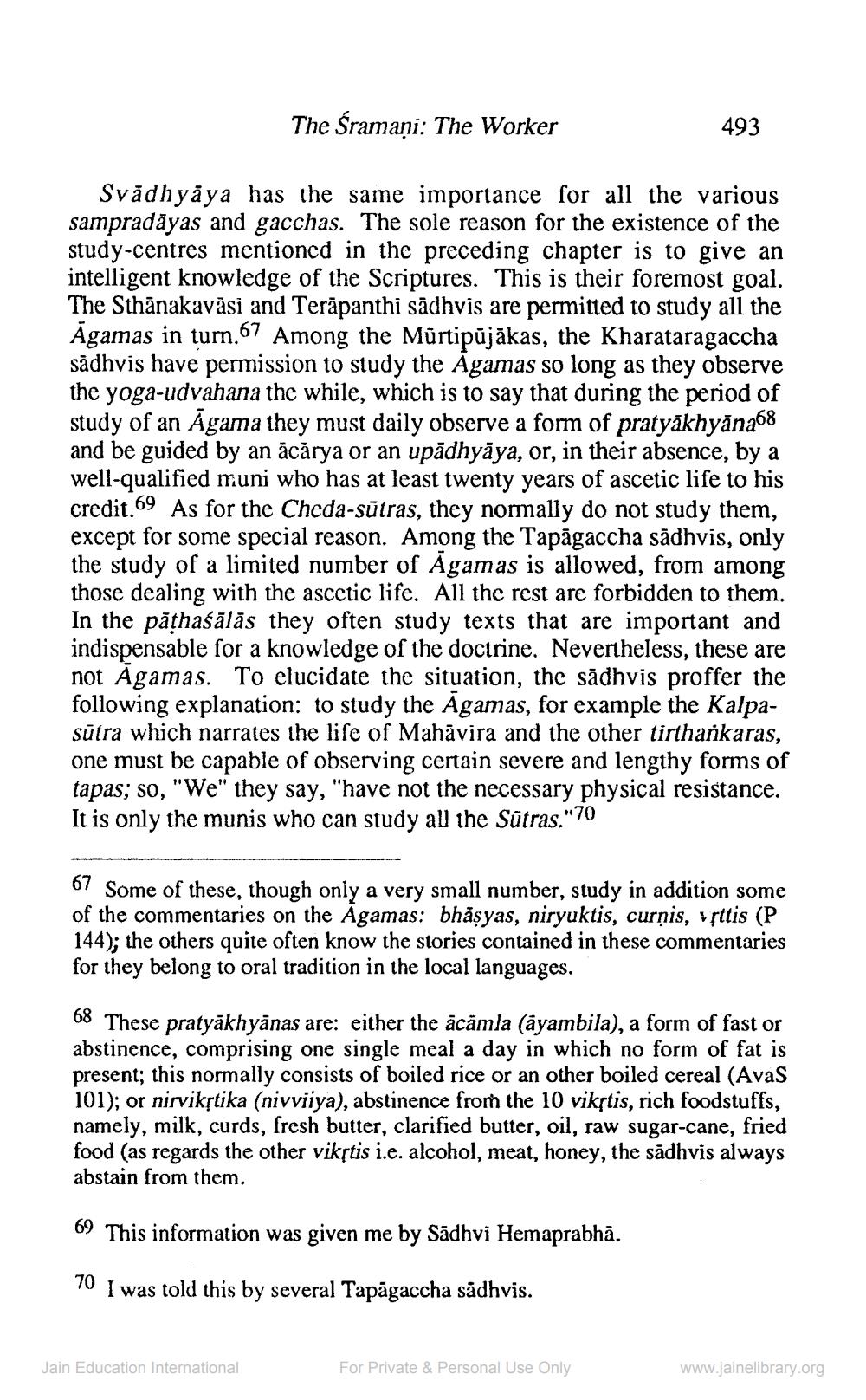________________
The Śramaņi: The Worker
493
Svădhyāya has the same importance for all the various sampradāyas and gacchas. The sole reason for the existence of the study-centres mentioned in the preceding chapter is to give an intelligent knowledge of the Scriptures. This is their foremost goal. The Sthānakavāsi and Terāpanthi sādhvis are permitted to study all the Agamas in turn.67 Among the Mūrtipūjākas, the Kharataragaccha sādhvis have permission to study the Agamas so long as they observe the yoga-udvahana the while, which is to say that during the period of study of an Agama they must daily observe a form of pratyākhyāna68 and be guided by an ācārya or an upādhyāya, or, in their absence, by a well-qualified muni who has at least twenty years of ascetic life to his credit.69 As for the Cheda-sūtras, they normally do not study them, except for some special reason. Among the Tapāgaccha sādhvis, only the study of a limited number of Agamas is allowed, from among those dealing with the ascetic life. All the rest are forbidden to them. In the păthaśālās they often study texts that are important and indispensable for a knowledge of the doctrine. Nevertheless, these are not Agamas. To elucidate the situation, the sādhvis proffer the following explanation: to study the Agamas, for example the Kalpasūtra which narrates the life of Mahāvira and the other tirthankaras, one must be capable of observing certain severe and lengthy forms of tapas; so, "We" they say, "have not the necessary physical resistance. It is only the munis who can study all the Sūtras."70
67 Some of these, though only a very small number, study in addition some of the commentaries on the Agamas: bhāsyas, niryuktis, curņis, vritis (P 144); the others quite often know the stories contained in these commentaries for they belong to oral tradition in the local languages.
68 These pratyākhyānas are: either the ācāmla (āyambila), a form of fast or abstinence, comprising one single meal a day in which no form of fat is present; this normally consists of boiled rice or an other boiled cereal (AvaS 101); or nirvikstika (nivviiya), abstinence from the 10 vikstis, rich foodstuffs, namely, milk, curds, fresh butter, clarified butter, oil, raw sugar-cane, fried food (as regards the other vikrtis i.e. alcohol, meat, honey, the sadhvis always abstain from them.
69 This information was given me by Sādhvi Hemaprabhā.
70 I was told this by several Tapāgaccha sadhvis.
Jain Education International
For Private & Personal Use Only
www.jainelibrary.org




